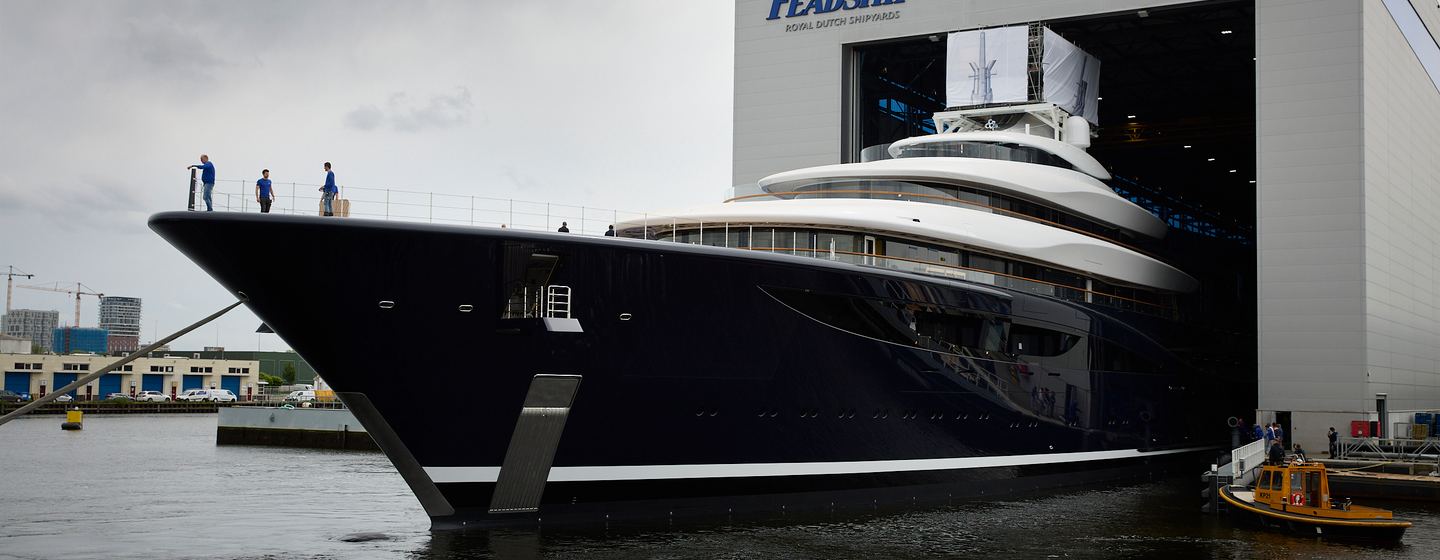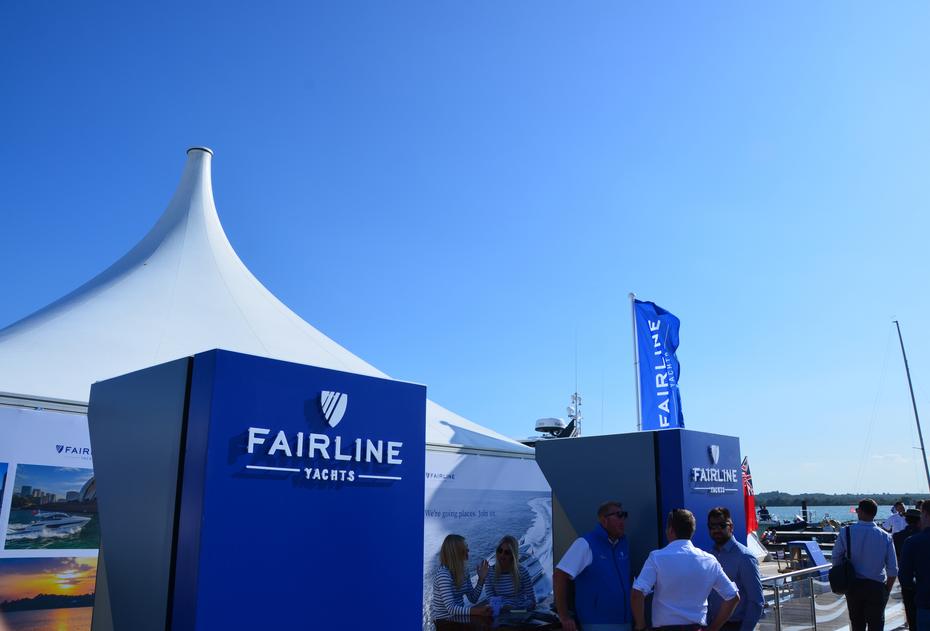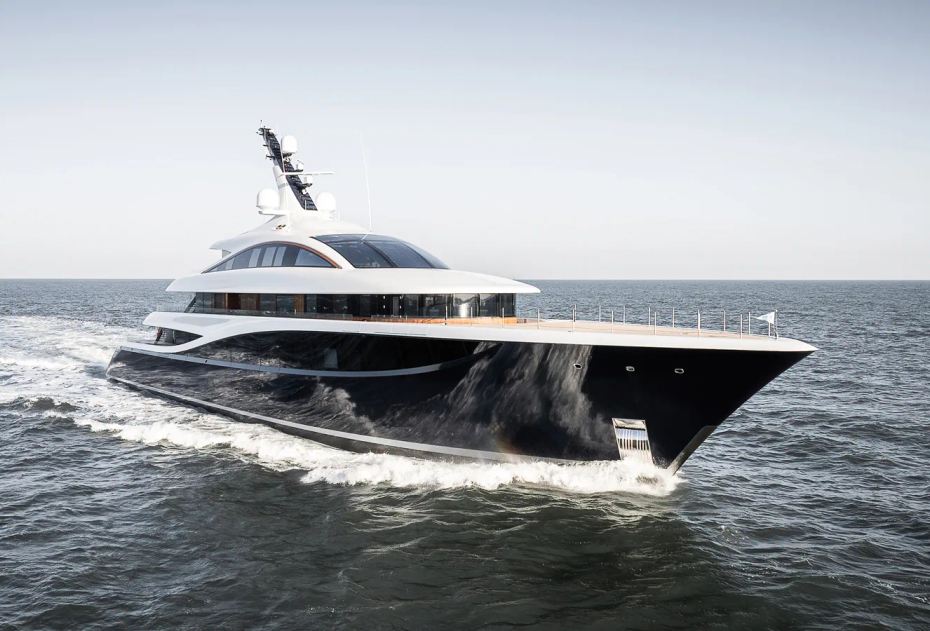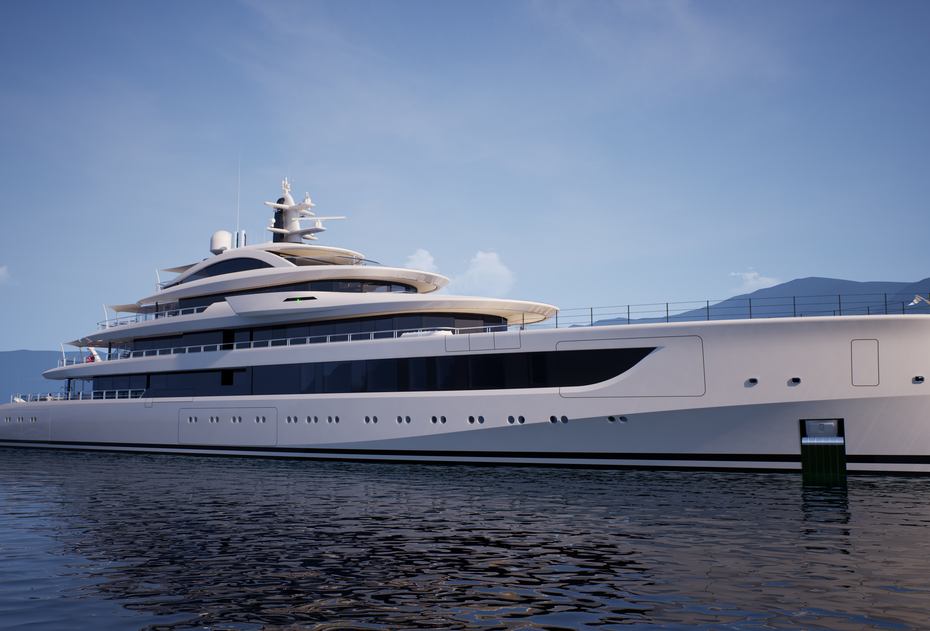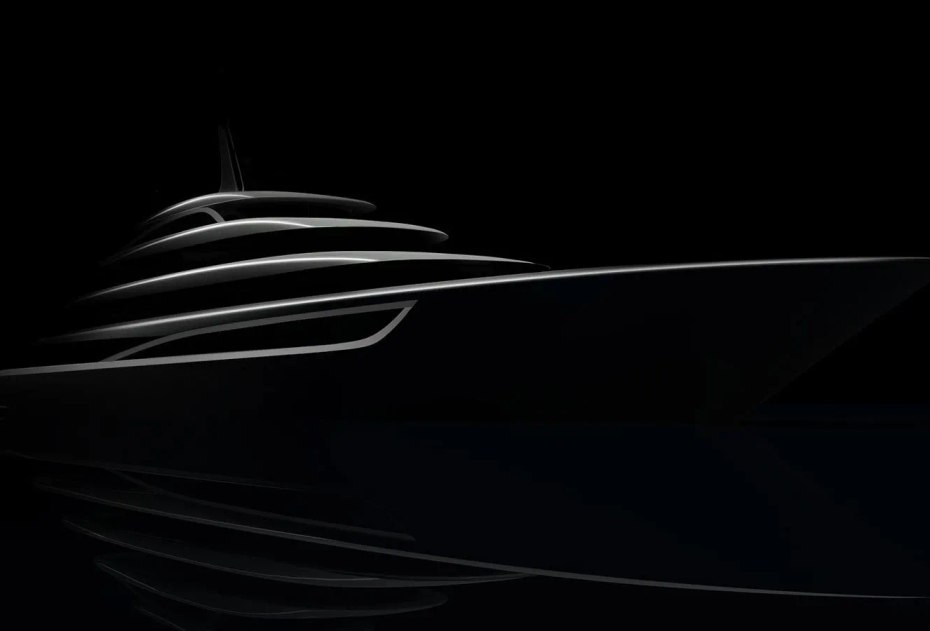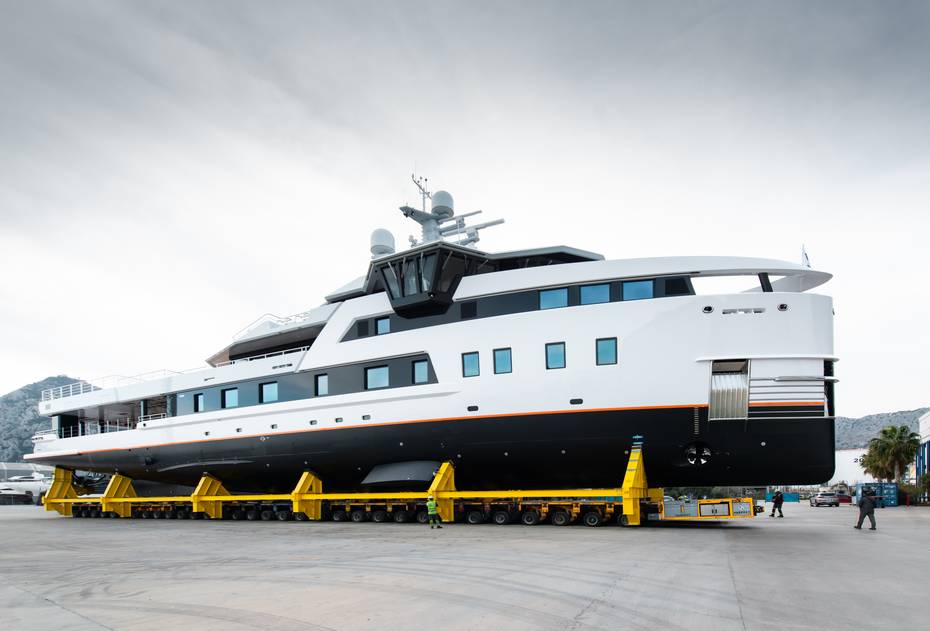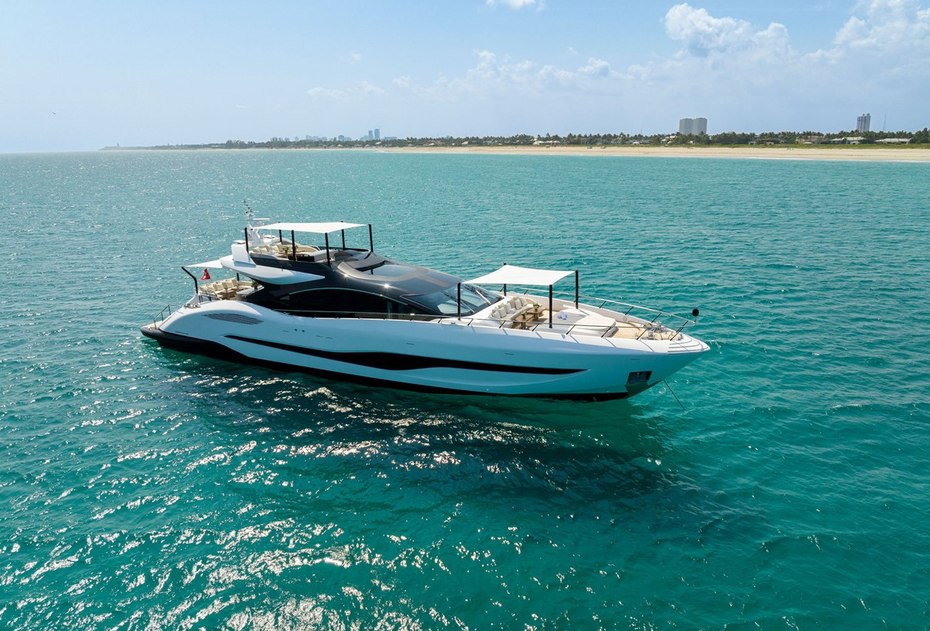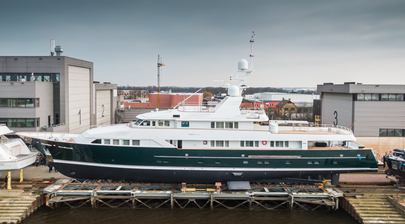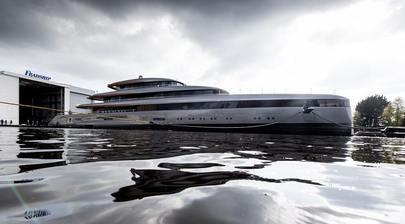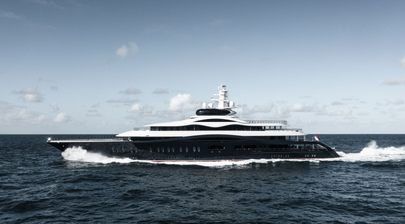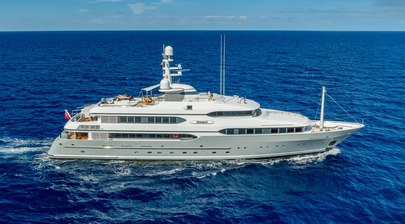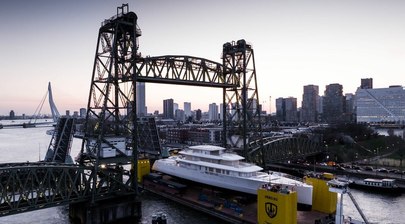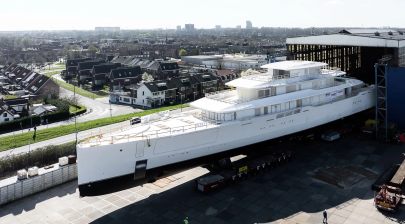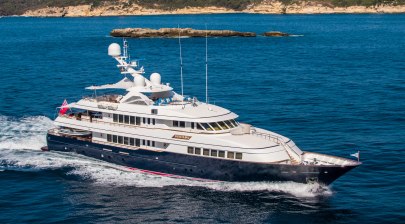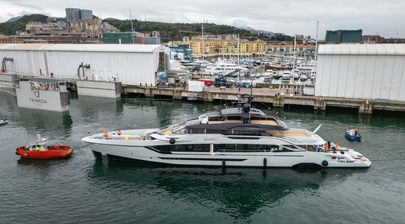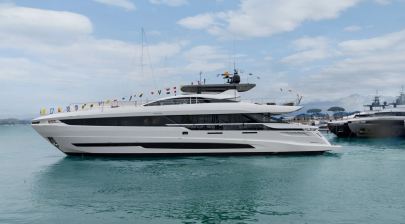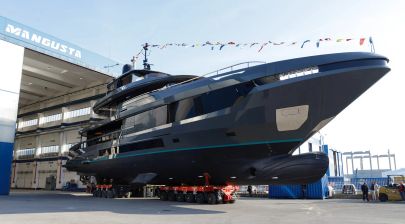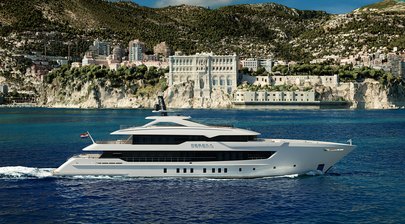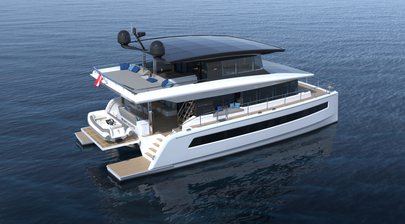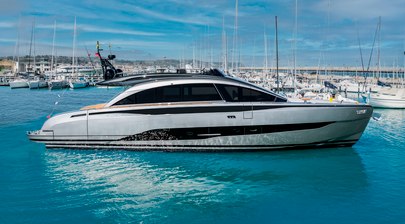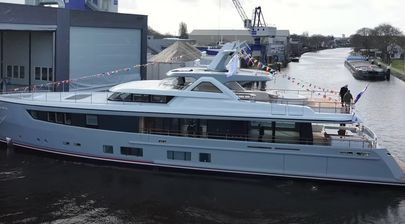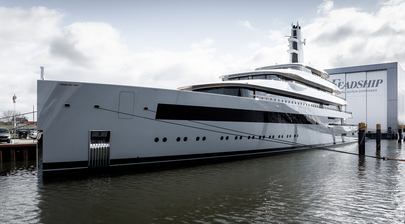On 4 May 2024, Feadship launched 118.8m (390ft) PROJECT 821 from its Amsterdam-based shipyard, claimed as the world's first hydrogen fuel-cell superyacht.
With design by RWD and owner representation by Edmiston, PROJECT 821 is Feadship’s latest environmentally conscious offering, utilizing green hydrogen to operate the yacht's hotel load and amenities with emission-free power.
Feadship's research and development team has been exploring hydrogen and other fossil-free fuel alternatives as part of the company's commitment to creating "net zero" yachts by 2030. With no existing regulations for hydrogen storage and fuel-cell systems at the class, flag-state, or even IMO level, Feadship collaborated with partners from allied industries, including Edmiston and Lloyd's Register, to develop properly scaled equipment, protocols, and safety regulations.

During the five-year construction period, one of the biggest challenges to overcome was developing a safe and sensible way to store compressed liquid hydrogen below deck at -253°C onboard a superyacht. Hydrogen is one of the most efficient and cleanest fuels, and when processed in a fuel cell, the only by-products are electricity and water/steam.
The aim has been to develop a new, clean technology not just for this project, but for the world. The size of the proposed yacht (100-meter-plus) made it a good candidate to explore pure green hydrogen as the fuel-cell source."
Feadship Director
CEO of Royal Van Lent Shipyard
Despite one cubic meter of liquid hydrogen weighing 70kg instead of approximately 800kg per cubic meter of non-fossil diesel equivalent fuel (HVO or e-diesel), storing it safely onboard a superyacht requires a double-walled cryogenic storage tank. However, this well-insulated cooling box in a dedicated room takes eight to ten times more space to store hydrogen than the energy equivalent in diesel fuel.

Integrating various components, including the cryogenic fuel tank, sixteen compact fuel cells, switchboard connection, and vent stacks, added 4m (13ft) to PROJECT 821's original length. Notably, the fuel cells can utilize methanol, offering versatility in fuel options. While the yacht cannot carry enough liquid hydrogen for extended crossings, its fuel cell technology significantly reduces carbon emissions by powering the hotel load, addressing a substantial portion of a yacht's energy consumption.
The value of the research as well the development of class and flag safety regulations for an entirely new type of energy generation is an advancement we are proud to have made available to all. Next year, for example, two long-route Norwegian passenger and car ferries will enter into service utilizing the system pioneered with PowerCell Group for PROJECT 821.”
Feadship Director
CEO of Royal Van Lent Shipyard.
PROJECT 821's energy storage capacity, though modest compared to previous models, enables silent operation for a week at anchor or emission-free cruising. Its waste heat recovery system efficiently heats onboard amenities, further enhancing energy efficiency. Additionally, smart AC systems contribute to reducing energy consumption in unoccupied spaces.

Beyond its environmental innovations, the vessel boasts remarkable size and design features. As the largest motor yacht launched in the Netherlands, it offers spacious accommodations across five decks, including a dedicated owner's deck with luxurious amenities. The yacht's wide corridors and gracious side decks provide ample space for guests to move comfortably.
Unique to PROJECT 821 is its private vertical corridor, extending to the lower deck, offering inviting lifestyle destinations on each level. British RWD Studio's design approach emphasizes a luxurious coastal ambiance, incorporating light neutral colors and premium materials throughout the yacht's interior and exterior spaces.
